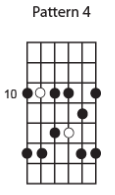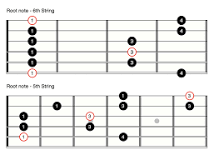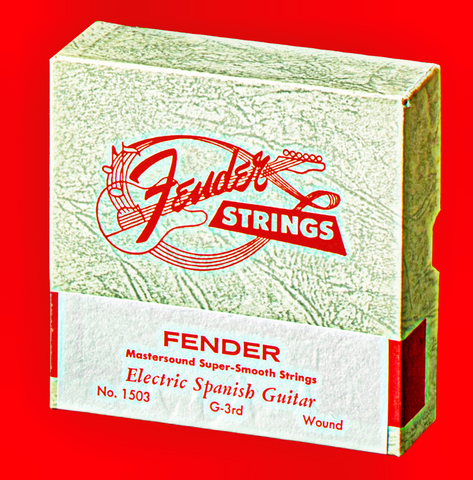Master the minor pentatonic scale

Your Guide to mastering the minor pentatonic scale
Major and Minor Pentatonic Scale
The pentatonic scale is popular among players who love improvising things in music. The pentatonic concept is simple and involves a collection of notes from major or minor scales. For instance, the major scale contains 7 notes.
The pentatonic scale chooses just 5 notes and creates a unique scale, the word Penta. The notes on the pentatonic scale generate a pleasant melody when played.

Learn to master this scale through this article. The minor pentatonic scale is made of 5 notes minor scale.
When playing the C major pentatonic scale, the shape will look as follows;

The notes played in the above shape include; C, D, E, G, and A.
For A M pentatonic scale, the shape will look as follows;

A minor pentatonic scale uses notes; A, C, D, E, G
As you will note in the above images, both minor and major scales have picked notes from the major pentatonic scale. They use degrees, 1,2,3,5, and 6 for the major scale and 1,3,4,5, and 7 for the minor scale.
Most players use the minor pentatonic scale in guitar playing; notwithstanding, you cannot underestimate its importance. Most rocks, blues, country, and bluegrass genres use the minor pentatonic scale.
Further, the minor pentatonic scale is broken into five pentatonic positions, as you will see below.

Notably, the minor pentatonic scale is the third most essential scale, and no wonder it is used in many music genres.
Making the Minor Pentatonic Scale
What are the five notes in the minor pentatonic scales?
To form the AM pentatonic scales, remove the 2nd and 6th scale degree from the minor scale. For instance, when you remove the 2nd and 6th scale degrees, you are left with A, C, D, E, and G in the A minor scale.

The Pentatonic Scale
A scale is an indispensable tool you need in guitar playing. It is a vital key to improvisation and gives you a perfect ability to play solos. While scales are fun to practice, we must learn the theoretical fundamentals.
Most popular guitarists like David Gilmour, Jimi Hendrix, Jimmy Page, Eric Clapton, B.B. King, Steve Vai, Joe Satriani, and Joe Bonamassa are famous for their ability to improvise.
If you thought their played random notes fast, you are wrong. These players understand connected notes and have practiced thoroughly to make the most of them.
Understanding scale fundamentals will not only help you in lead playing but helps you identify intervals, build chords and develop spectacular chord progressions.
They will also help you compose vocal melodies and harmonies.
Root Note
The root note is a fundamental theory for any guitar player. Every scale has a root note. A scale gets its name from the root notes; for instance, A minor pentatonic scale means the root note for this particular scale is note A. it is also the first note of a major chord.
While representing notes in a scale chart, root notes are indicated differently. Mostly, it is indicated as white dots. Further, the root will determine a chord’s pitch making it more important in music terminology.
In addition, the root note is the primary note that allows other notes in the chord to exist in the order they do.
Demystifying Minor Pentatonic Scale Patterns
Scale patterns are musical phrases that are used repeatedly in a particular order. The most common scale pattern is the major scale, which consists of eight notes. When played in order, these notes create a pleasing, major-key sound.
There are other patterns besides the major pentatonic scale, however. You will find 5 notes on the minor pentatonic scale and a darker, more melancholy sound. Then there are the blues scale, the chromatic scale, and the whole tone scale, to name a few more.
You can create various musical genres through unique sounds on every scale. For example, the major pentatonic scale is often used for upbeat, happy songs, while the minor pentatonic scale is more suited for sad or introspective tunes.
Knowing how to create patterns is valuable for any musician, as it gives them a larger toolbox to work with when composing or improvising.
You can learn to create patterns and add an extra dimension to their music as long as you keep practicing.
Guitarists break up the fretboard into sections with shapes, positions, and patterns or box shape to learn notes perfectly across the fretboard.
Playing Patterns
The secret to playing great patterns on the guitar is proper finger arrangement. You may assign your index finger to the third fret through the sixth fret and your middle finger to the fourth fret to access the particular notes in that scale. Best guitarists know how to economize motion to make solo playing easy.
5 Patterns of the Minor Pentatonic Scale
Use five patterns to play the minor pentatonic scale. Every pattern is unique, adding a unique personality and a different feeling to the guitar lick. For easy flow and professional guitar playing, you must understand how to play the five patterns across the guitar fretboard. Learn the patterns in different keys.
Pattern 1

The first pattern can be made as a box. Start with your index finger on the sixth string on the 3rd fret. As you play that note, make sure your pinky finger is on the sixth finger, sixth fret. Practice playing the scale as shown in the scale diagram above. Use your ring finger for notes around the fifth fret. Further, the middle finger remains free since there are no notes in the fourth position of your first pattern.
To better practice, play the scale forward and in reverse. For example, when playing a G minor chord, first practice the note of the G minor pentatonic scale and strum the chord. The two sounds should have a huge similarity and they sound good.
Pattern 2

In the case of the G minor pentatonic scale in its second position, you should start playing the sixth fret six-string. Use your second finger to play this note. Your first finger should be in the fifth fret on other strings. Maintain that shape as you practice and in your playing.
In addition, play the pattern string by string until you reach the top of the scale. Play again but in reverse. This will help you grow your memory.
Pattern 3

On the third pattern, try the G minor pentatonic scale on the third position. Make sure your middle finger is placed on the sixth string and eighth fret, and play the pattern through. Notably, this pentatonic pattern will require a position shift.
As you reach the second string, shift your hand by one fret and play down the fretboard. Further, move your hand down to get to the third string. Memorize the scale by playing it backward and forward repeatedly.
Pattern 4

As you play the G minor pentatonic scale, your first finger will be on the sixth string tenth fret. Like other patterns, follow them and play them repeatedly as you memorize them. Play the scale slowly and repeatedly until you understand and memorize it.
Pattern 5

To play the fifth pattern, the second finger takes the lead on the sixth string of thirteen frets. Play along the pattern as shown above to stick in your mind. Make sure to play the scale slowly and evenly while playing forward and backward repeatedly.
Patterns Summary

The above is a summary of all minor pentatonic shapes in the key of A minor. Tonic shapes are shown in blue, which means they are notes of A since, in other words, they are the rot notes. When playing in a different key, the tonic shapes will change.
Beyond the Shape
When practicing, you will notice that the 5 shapes start from the 5th fret and end at the 17th fret. You may wonder what to do beyond the 5 shapes as you only cover part of the fretboard. In this case, play the next shape in line. If you finished the 5th shape at fret 17, start the next shape, shape one, and keep it going. At this point, you will be playing shape one on an octave higher than you started.
This is how the new shape will look like when compared to the original shape;


Notice how the two shapes are identical though they are played at different locations on the fretboard.
Before shape 1, you will always have shape 5. This means you can get shape five twice in the fretboard. It first appears at the 15th fret and another time starting on the 3rd fret before pattern 1.

How to Navigate the Fretboard
Looking at all the shapes of the A minor pentatonic scale in the fretboard will help you better understand the fretboard. It can be intimidating to look at at first, but upon closer observations, you will notice they show 7 different positions of the A minor pentatonic scale.
On the left edge, you get pattern five, followed by pattern one, and so on. The final shape on the right is pattern one which is an octave higher than the first. Learning the five shapes will help you easily maneuver the fretboard and improve your guitar-playing techniques.

How to Change Keys
So far, we have covered shapes/patterns and different positions on the minor pentatonic scale. Our main focus has been on the key of A. You may be wondering how to maneuver through other keys.
You can play a minor pentatonic scale on any key. Notwithstanding, you must memorize all the notes on the 6th string. Here is an image of 12 keys. You can play the scale.

The good news is there are no new shapes for each key. You must apply the shapes we learned for key A for all other keys. Follow these three simple steps.
Start by looking for the root note of the key you are playing on the 6th string. If, for instance, you choose to play on the key of C minor, first look for the note of C on the 6th string, and if you are playing on key B minor, look for a note of B on the 6th string.
The note you pick will be your root note and the first note of the first shape you will play on the minor pentatonic scale.
The third step is that after you identify your first shape on the key, you can more easily locate other shapes on the fretboard. For instance, if you are playing on G minor, it is easy to locate the originating pattern of the minor pentatonic scale. This is what it looks like.

This is a leading path to help you locate other scale shapes on the fretboard. Notably, the second shape on G minor scale starts at the 6th fret, while the third shape appears on the 8th fret.
Practice
To master the minor pentatonic scale, you must invest much time in practice.
Practice exercise session 1
The first exercise is simple. In this exercise, you must play the pentatonic shapes along the metronome at the slowest tempo. It will help you hit the right note slowly. At this point, concentrate on something other than speed. Play as slowly as you can. Concentrate on hitting the right note.
The exercise has two unique purposes. One, it helps consolidate the minor pentatonic scale shapes along the fretboard. Next, it will help you understand and learn to create rhythmic precision.
After you can hit the right notes, start building up on the speed. Increase the metronome, so timing is the most important art in a guitarist. Use slowly to manageable levels.
Start the metronome from at least 60 or 70 BPM and play through the metronome, ensuring you are hitting the right notes on each click. Practice on different keys and observes the time you use to finish the entire fretboard. Take your time with it. Concentrate on accuracy.
Make sure to start in levels that will help you to sync at the beep of your metronome. Repeat the exercise with reduced metronome speed until you can play every note accurately. Moreover, you can use this as a warm-up exercise before playing.
Practice exercise session 2
For proper mastery of the minor pentatonic scale, get more technical. Here, practice different minor pentatonic shapes, one at a time, and practice by playing them chromatically, up and down the fretboard. Check out this music graph on what you need to do on easy to locate the beginning pattern on the minor pentatonic scale.

To kickstart the exercise, play shape one of the minor pentatonic scales, as we learn earlier. Make sure to start on the 3rd fret and practice along the fretboard. Go all the way up to the 15th fret. Move from one section of the scale to another for proper mastery. Practice all shapes at the click of a metronome.
To make the exercise more engaging, play for notes for each click of a metronome. You will notice by the time you finish the exercise; you have developed a better consolidation of the scale.
It will help you get used to the speed and train your hand to develop stamina.
Choose a fast but manageable BPM; nonetheless, do not overstretch yourself. Play shapes on a particular tempo while keeping up the BPM. Higher BPM will be challenging, but it can only get better.
Frequently Asked Questions
What are the five notes in the minor pentatonic scale?
The notes found in a minor pentatonic scale vary depending on root notes. For A minor pentatonic scale, for instance, the notes include; A, C, D, E, and G. See the image below.

What are minor pentatonic scales?
A minor pentatonic scale is a combination of a five-note scale crafted from the natural minor though it lacks the 2nd and 6th scale degrees.
You can construct a minor pentatonic scale on any key using the formula; 1, b3, 4, 5, b7. The scale is further broken down to form the five pentatonic positions.
How do you play a minor pentatonic scale?
Start with the root note at the time. For instance, if you are playing the A minor pentatonic scale, you need to start with root notes of A, C, D, E, and G and finish with a high octave A. For effective exercise, start climbing down the fretboard to get a better consolidation.
Additionally, try practicing the alternate picking when playing the scale. This will help you train your ear while building mechanical skills in picking and fretting notes.
Is A minor pentatonic same as a C major?
C major scale and AM pentatonic scales use the same notes. Nonetheless, they are played in different contexts, which brings out their differences. Notwithstanding, you can use them interchangeably.

What notes are in A minor pentatonic?
AM pentatonic scale consists of 5 notes; A, C, D, E, and G. they are all derived from intervals of notes 1, 3, 4, 5, and 7. You can therefore use the formula; 1st (root), 3rd (♭3), 4th (p4), 5th (p5), and 7th (♭7) to create the minor pentatonic scale on any key.
How do you use the AM pentatonic scale?
A minor pentatonic scale is important in soloing blues or any song played in the key of A. with an advanced understanding of 12-Bar Blues; you can create great jams.
How many positions are in the A minor pentatonic scale?
This scale has 5 positions. The shapes or patterns are derived from the natural minor scale that comprises the root, minor 3rd, uses the perfect 4th, then the perfect 5th, and lastly, uses minor 7th.
What are the positions of the minor pentatonic scale?
This scale is used in genres like rock, blues, and jazz. The scale consists of five notes, typically played in the following order: root, minor third, fourth, fifth, and minor seventh.
The scale’s root note is typically the lowest note, and the scale is typically played in ascending or descending order.
What are the steps in a minor pentatonic scale?
There are five notes in a minor pentatonic scale arranged in a specific order. In step one, you identify the root note, which is the note that the scale is named after.
The root note will be the starting point for the rest of the scale. The next step is to identify the scale’s second, third, and fourth notes.
You will use these notes to create the basic structure of the scale. The scale’s fifth note is typically considered the “top” note and is used as an embellishment or decoration.
From the blog

Rockstars in Training: The Best Kids’ Electric Guitars for 2024

Redefining Your Riffs: How Electric Guitar Strings Shape Your Sound


